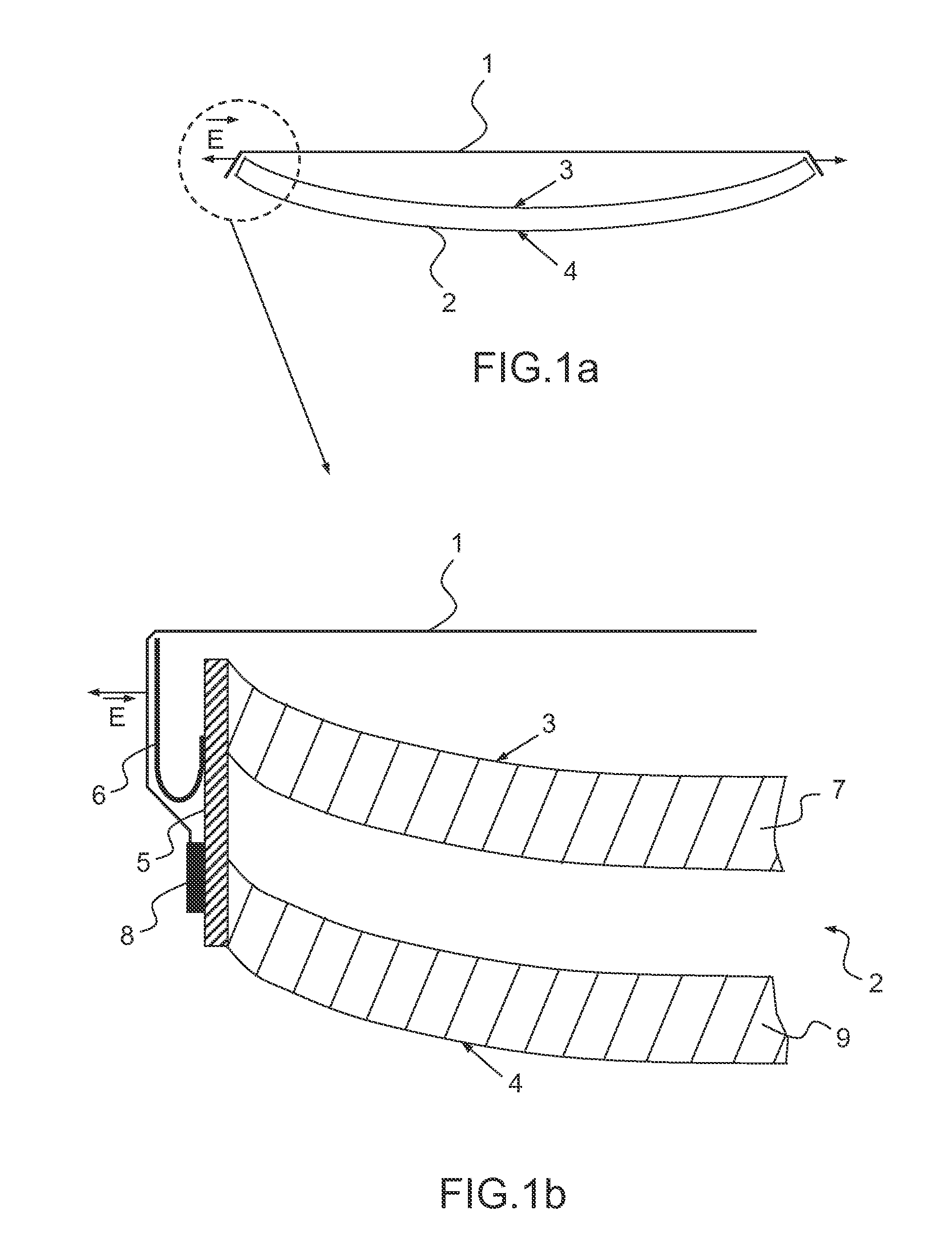Radio Wave Transmitting Device, Antenna and Spacecraft
a radio wave and transmitting device technology, applied in the field of telecommunications antennas, can solve the problems of kapton® not being completely transparent to radio waves, affecting the operation of the antenna, and damaging the elements
- Summary
- Abstract
- Description
- Claims
- Application Information
AI Technical Summary
Benefits of technology
Problems solved by technology
Method used
Image
Examples
Embodiment Construction
[0047]FIGS. 2a and 2b show a section of a telecommunications antenna 10 according to the invention comprising a source 11 positioned at the focus point of a device 12 for transmitting radio waves according to the invention. This device 12 comprises a reflector 13 on which radio waves are intended to be reflected from the source.
[0048]As a variant, the source may be replaced by a receiver. The waves are then reflected to the receiver.
[0049]The telecommunications antenna may be designed for space or earth applications.
[0050]The reflector 13 comprises a first active face 15 and a second inactive face 16. These faces are, in the embodiment of FIG. 2a, substantially parallel. The first face 15 and the second face 16 are joined together via an edge 17 extending continuously on the periphery of the two faces 15, 16. A membrane separates the first face 15 from space.
[0051]In the embodiments of the figures, the reflector is parabolic. The first active face 15 is concave. In the embodiment of...
PUM
| Property | Measurement | Unit |
|---|---|---|
| stiffness | aaaaa | aaaaa |
| stiffness | aaaaa | aaaaa |
| thickness | aaaaa | aaaaa |
Abstract
Description
Claims
Application Information
 Login to View More
Login to View More - R&D
- Intellectual Property
- Life Sciences
- Materials
- Tech Scout
- Unparalleled Data Quality
- Higher Quality Content
- 60% Fewer Hallucinations
Browse by: Latest US Patents, China's latest patents, Technical Efficacy Thesaurus, Application Domain, Technology Topic, Popular Technical Reports.
© 2025 PatSnap. All rights reserved.Legal|Privacy policy|Modern Slavery Act Transparency Statement|Sitemap|About US| Contact US: help@patsnap.com



